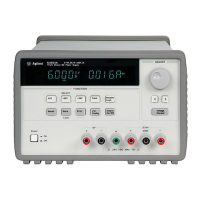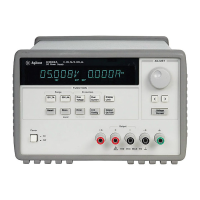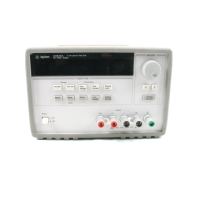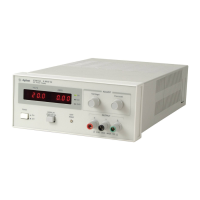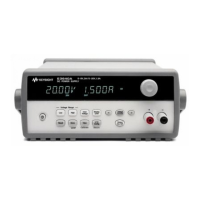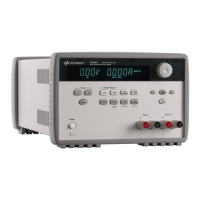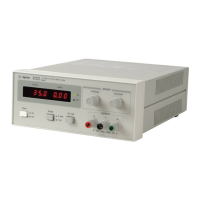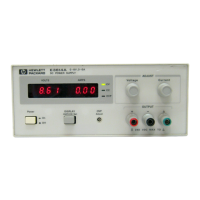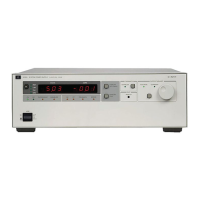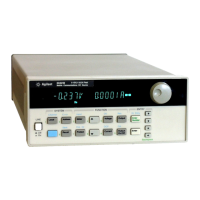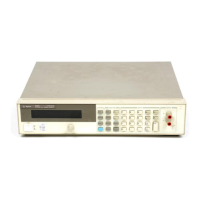Chapter 3 Calibration Procedures
Constant Voltage (CV) Verifications
51
3
Constant Voltage (CV) Verifications
Constant Voltage Test Setup
If more than one meter or if a meter and an oscilloscope are used, connect
each to the (+) and (-) terminals by a separate pair of leads to avoid mutual
coupling effects. Use coaxial cable or shielded 2-wire cable to avoid noise pick-
up on the test leads.
Voltage Programming and Readback Accuracy
This test verifies that the voltage programming and GPIB or RS-232 readback
functions are within specifications. Note that the readback values over the
remote interface should be identical to those displayed on the front panel.
You should program the power supply over the remote interface for this test
to avoid round off errors.
1 Turn off the power supply and connect a digital voltmeter between the (+) and
(-) terminals of the output to be tested as shown in Figure 3-1.
2 Turn on the power supply. Select the 20V/10A* or 50V/4A** range and enable
the output by sending the commands:
VOLT:RANG P20V (E3633A)
VOLT:RANG P50V (E3634A)
OUTP ON
3 Program the output voltage to zero volt and current to full rated value
(10.0 A)* or (4.0 A)** by sending the commands:
VOLT 0
CURR 10 (E3633A)
CURR 4 (E3634A)
4 Record the output voltage reading on the digital voltmeter (DVM). The reading
should be within the limit of (0 V ± 10 mV). Also, note that the
CV, Adrs, Limit,
and
Rmt annunciators are on.
5 Readback the output voltage over the remote interface by sending the
command:
MEAS:VOLT?
6 Record the value displayed on the controller. This value should be within the
limit of (DVM ±5 mV).
*For Agilent E3633A Model **For Agilent E3634A Model
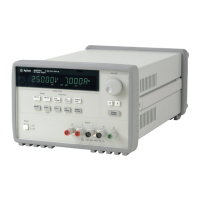
